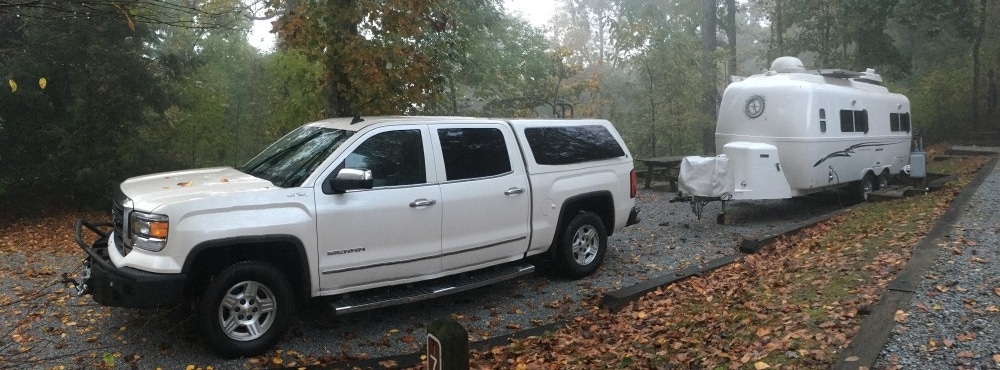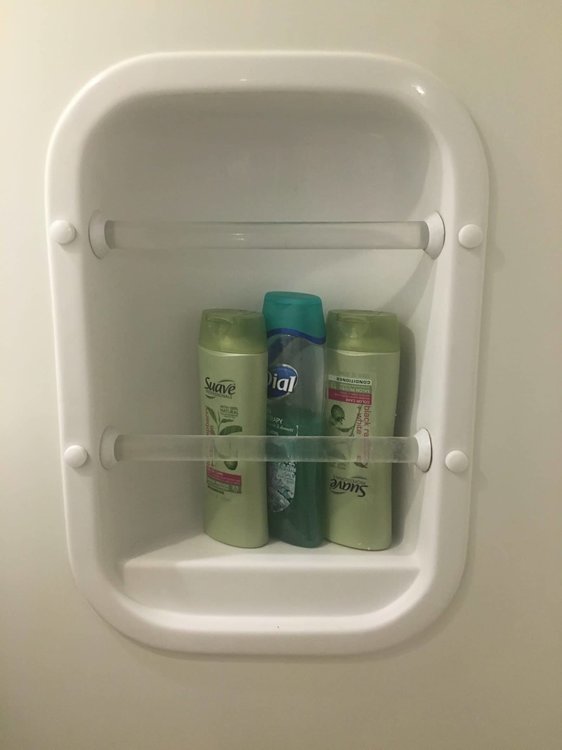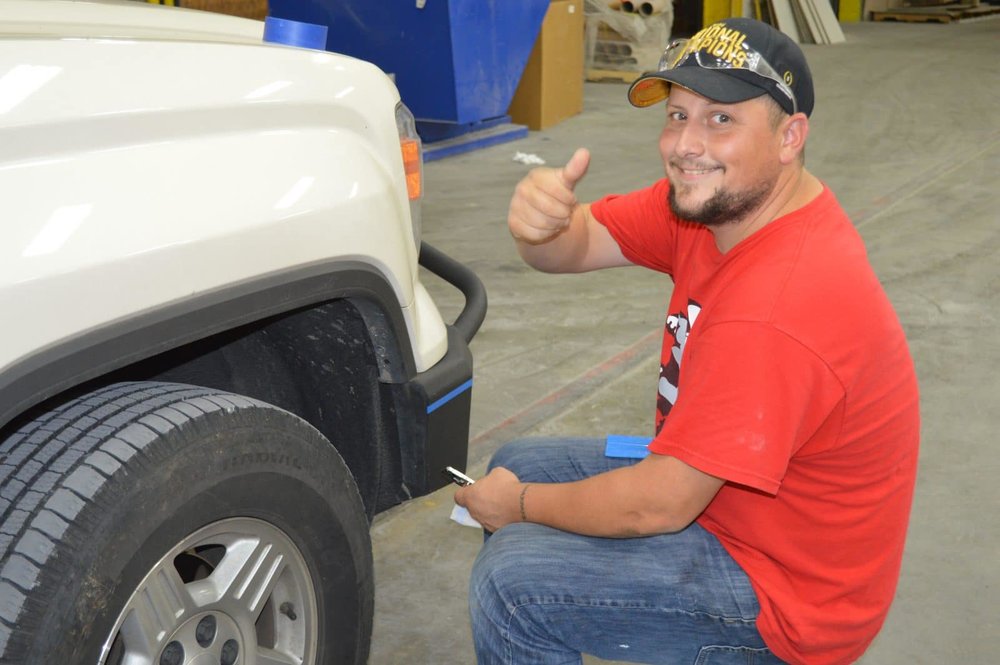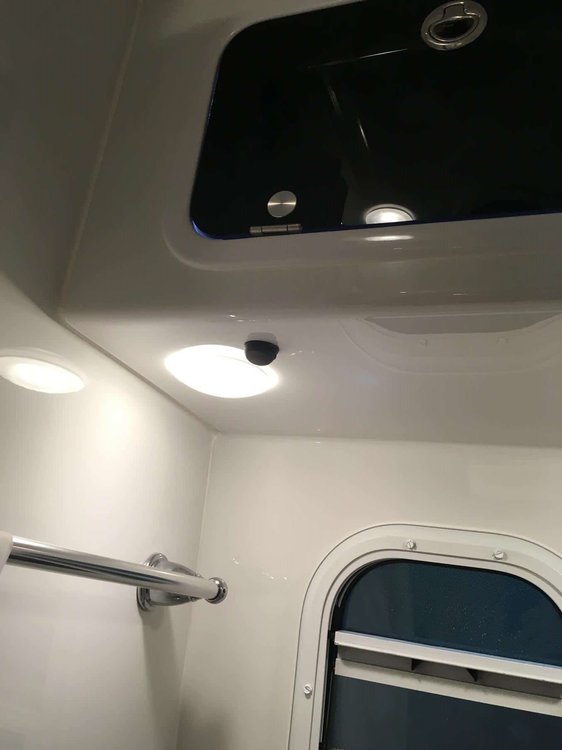-
Posts
3,286 -
Joined
-
Last visited
-
Days Won
169
Everything posted by ScubaRx
-

So... When and Where is the Oliver 2017 Rally??
ScubaRx replied to ScottyGS's topic in Events & Rallies
I vote for sometime in September, don't really care where. -

Dexter Single Axle Suspension Kit Legacy Elite
ScubaRx replied to rideandfly's topic in Ollie Modifications
While at the factory recently, management told me that the Dexter EZ Flex system will probably become standard equipment in the future. -
I noticed in your picture that the solar panels appeared to be partially covered. I offer this information in case you were not aware of how your solar panels output electricity. You may well have known all this and taken it into consideration. Partial shading of even one cell on a 36-cell solar panel, will reduce its power output. Because all cells are connected in a series string, the weakest cell will bring the others down to its reduced power level. Therefore, whether 1/2 of one cell is shaded, or 1/2 a row of cells is shaded, the power decrease will be the same and proportional to the percentage of area shaded, in this case 50%. When a full cell is shaded, it can actually consume energy produced by the remainder of the cells, and trigger the solar panel to protect itself. The solar panel will route the power around that series string.
-
Try placing the level on the outside under the edge that forms the belly band. You can also measure the distance from the bottom of the frame to the ground in the front and back.
-
Good morning Canoe12 and welcome to the Oliver Forums. The Oliver electric jacks do extend far enough to not use any blocks at all. It's just with the use of a tall block we have discovered several benefits: 1 - Time saved in running the jacks as you don't have to run them all the way down (and back up) 2 - Energy saved in not running the jacks so much (they are hogs) 3 - Less chance of accidentally driving off with them fully extended and bending the jack (you will simply drive off the block)
-
Dennis, in every case, I took it out to run or inspect wiring. The easiest way to route wires from outside the front of the trailer to the inside is thru this area. From there you can go under the black tank or into the closet. In each of our trailers, I ran a remote switch for the front jack allowing me inside control. In our first Oliver all the switches for the outside lights were outside on the driver's side. I turned these outside switches into 3 way switches and put the second set inside by the entrance door.
-
During a recent trip to the factory to have all our bathroom drains rebuilt they re-did my vanity insert attachment to current standards. This is the way it looks now. And BTW, it is not hard to remove and replace. In the two Oliver's we've owned, I've probably removed it at least a half dozen times. I agree with John, it's not the most accessible place in the trailer but it's not impossible to get there.
-
Hi David, congrats on your new baby. Picking up a new Oliver trailer after all the planning and waiting is just about as good as it gets. I know you and yours will make many new memories. Your area of the country is one of our very favorite places to visit. We will probably be coming out that way again this spring.
-
Hey Mike, from one Mississippi boy to another, after you have purged all the water from your system all you will need is a small 110 volt heater from Wal-Mart to keep your Ollie safe from freezing as well as warm and toasty inside all winter. I usually keep the temp around 60 or so. Just keep her plugged in and your batteries will stay charged also. I don't think I'd try to run the propane furnace all winter, I'm sure it has a finite lifespan (especially the fan) and several months of constant use can't do anything but hasten its demise.
-
While at the factory last week, Tommy told me he would be leaving Oliver soon as he and his family were moving to Ohio to be near his wife’s mother. He did not know who would be taking his place. Let’s all wish him well in this new chapter of his life. Phillip Andrews, one of the fine employees of OTT had an apparent heart attack this past weekend. His facebook posts indicate that he did not have any blockages and won’t require any stents. This is good news, but remember to keep him in your prayers. You may not know Phil, but he is one of the finest men I have every met. If you’ve picked up an Oliver trailer lately it’s likely that Phil applied your graphics as he is a Graphic Designer and member of the Quality Control Team at Oliver. Get Well Soon, Phil...
-
You can do the "old towel and safety glasses" thing if you want, but it'll take all the fun out of it. If I had anything to add to this, it would be: 1 - Do not let a full black tank sit for a month or two (and percolate) after you return home. 2 - When you do get around to flushing it, do not turn the black tank flush on to "completely" fill (and thereby pressurize) the black tank. 3 - If you have already done #2 above, DO NOT peer down into the toilet with a flashlight as you press the foot pedal to check the level. 4 - If you've gotten this far you should have listened to the John's very wise advice.
-
No No. The camera only requires a power and ground wire. I suppose they would run that for you if you asked prior to construction, I would ask for it to be a switched connection. No, however from my personal observation, mine will transmit a signal for over 300 feet. The system that is currently being used is the Voyager WVOS713. The camera and monitor are dedicated and I doubt that either would work with other systems. While at the factory this week, I was told that they are looking at another system for 2018. This is because of customer concerns of the monitor being too big (I don't agree) and the unsightly bundle of wires that is left hanging from the monitor after installation (I do agree.) I told them that the extra wiring was easily eliminated for a very simple, elegant install but they were not interested in doing the extra work to accomplish it. I'm not convinced that any system will out-perform this one.
-
I'm confused, we have owned two Olivers over the past eight years and I have never undone the sewer hose from the connection up inside either Oliver. I simply leave it connected all the time and stuff the hose back up into the bumper after I'm finished using it. We even keep a second hose stored there also. Is there a reason that most people seem to undo this hose after dumping?
-

Generator use with hard wired Surge Protector
ScubaRx replied to Tommy67's topic in Mechanical & Technical Tips
Don't spend the $20.00 or so to get one from the company. Simply buy a replacement cord plug from Home Depot or equivalent and internally short the ground and the neutral. Plug this into the 20 amp outlet on your generator and leave it there until you sell it. All your problems are solved (or at least the ones concerning your surge protector not letting power from your gennie pass through. ) -
I deleted your second post for you.
-

Where to carry spare gas for the generator?
ScubaRx replied to John E Davies's topic in Ollie Modifications
We use military Scepter fuel and water containers that we carry in the back of the truck. They are hard to find (not "available" in the USA), expensive but totally safe. They are made to military specifications and subjected to UN transport code classification tests. These canisters have proven themselves for their ruggedness and durability offering options for fitting with various accessories. They are the only containers certified safe to carry on board aircraft while filled with fuel. The plastic construction prevents fatal explosion risk when the canisters are hit with shrapnel or projectiles; in fires they may eventually burn with the fuel, but no instantaneous explosions caused by pressure build-up as is the case with metal fuel cans. Water Canisters Like fuel, a potable water supply to the soldier in the field is an essential link in the supply chain. Scepter's Military Water Canisters (MWC) are made to military standards with dimensions similar to the MFC. -
John, the tongue is between 4 and 5 feet long. However, the adjustable tongue has been deleted from the new models so, unless buying used, that security option would no longer be available.
-
Unfortunately, we will be on our Fall trip and unable to attend. I wish this had been a better planned event. A month's notice is pretty short, most events are announced a year in advance.
-

Thermostat light (2015 Elite II)
ScubaRx replied to Windwalker's topic in Mechanical & Technical Tips
Dometic has come out with the new CT Thermostat to replace the old Single Zone RV Air Conditioner Thermostat. -
Testing: Let’s all go to the Airstream Forum in a new window… I find that the "gear" icon on the Insert/edit link tab, is already there but it only shows up if you submit a post and the edit it!!!! Obviously, as says, there is some "Error In The System" But your method works for now (What's up here, Matt?). Thanks for the information.
-

Thermostat light (2015 Elite II)
ScubaRx replied to Windwalker's topic in Mechanical & Technical Tips
I was unaware that the Dometic Penguin single zone RV Air Conditioner Thermostat has a back light. I certainly wish it did. If someone know differently please post how to activate it. -
Do you travel with the bumper lowered?
-
This would be a great upgrade if installed during a build. Assuming it would fit somewhere, you would do away with the PD 4045 and get a charger that you could adjust the charging parameters. If there is a downside it's the $2000.00 cost of inverter/charger, control panel and cabling that is needed.
-





